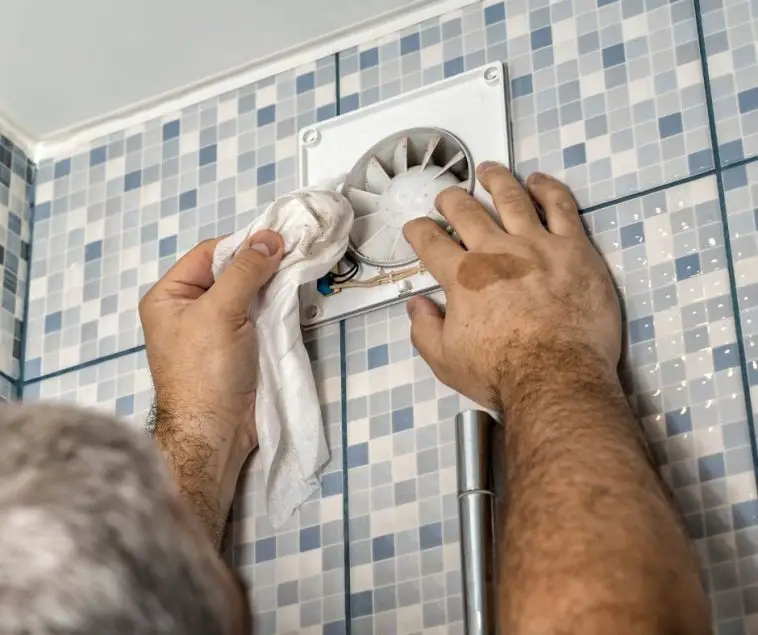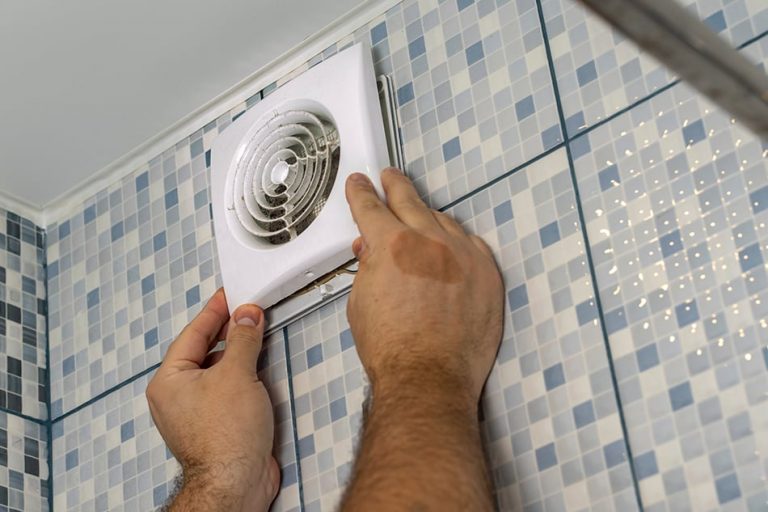Causes of Bathroom Exhaust Dripping Water

Dripping water from your bathroom exhaust fan can be a real pain, literally. Not only is it annoying, but it can also lead to mold and mildew growth, which can damage your bathroom and pose health risks. So, what’s going on? Let’s dive into the reasons behind this unwelcome drip.
Condensation in Exhaust Ducts
Condensation occurs when warm, moist air comes into contact with a cold surface. In the case of bathroom exhaust fans, this happens when the warm, humid air from your shower or bath is drawn into the exhaust duct. The ductwork, especially if it’s uninsulated or located in a cold area, can cool the air, causing the water vapor to condense and form droplets. This is a common occurrence, especially in colder climates or during the winter months when the temperature difference between the inside and outside is significant.
Improper Ventilation
Improper ventilation can exacerbate the condensation problem. If your exhaust fan isn’t powerful enough to effectively remove the moisture from your bathroom, the humid air will linger, increasing the chances of condensation forming in the ductwork. Additionally, if the ductwork is too long or has too many bends, it can slow down the airflow and allow more moisture to accumulate. Remember, a well-ventilated bathroom is key to preventing condensation.
Types of Exhaust Fans and Their Impact on Condensation
The type of exhaust fan you have can also play a role in condensation. For example, older, less powerful fans may not be able to remove enough moisture, leading to more condensation. Newer, more efficient fans with higher CFM (cubic feet per minute) ratings are generally better at removing moisture and reducing condensation. Additionally, some fans have built-in features, like humidity sensors, that automatically adjust their speed to remove the right amount of moisture. These features can be particularly helpful in reducing condensation.
Troubleshooting and Solutions: Bathroom Exhaust Dripping Water

So, you’ve got a leaky bathroom exhaust fan, and you’re ready to fix it, right? Don’t worry, you’re not alone. This is a common issue, and it’s usually pretty easy to fix. Let’s dive in and get that dripping stopped!
Diagnosing the Source of the Drip
First things first, you need to figure out where the water is coming from. It’s like a detective story, but instead of clues, we’ve got drips. Here’s how to track down the culprit:
- Check the Vent: Start by inspecting the vent outside your house. Look for any blockages or obstructions that could be preventing air from flowing freely. Maybe there’s a bird’s nest, leaves, or even a rogue squirrel causing trouble. If you see anything blocking the vent, clear it out. You can use a long-handled brush or a leaf blower to reach the obstruction.
- Inspect the Ductwork: Next, take a look at the ductwork connecting your exhaust fan to the vent. This is often hidden within the walls or ceiling, but if you can access it, check for any cracks, holes, or loose connections. These are all potential leak points. If you find any problems, you can seal them with duct tape or a specialized sealant.
- Examine the Exhaust Fan: Finally, take a closer look at the exhaust fan itself. Make sure the fan blades are clean and spinning freely. If the fan is old or worn out, it might not be working efficiently and could be letting water leak in.
Common Issues and Solutions
Here’s a table summarizing some common issues and their solutions:
| Issue | Solution |
|---|---|
| Clogged vent | Clean or replace the vent |
| Leaky ductwork | Seal or replace the ductwork |
| Malfunctioning fan | Repair or replace the fan |
Benefits of a Dehumidifier, Bathroom exhaust dripping water
Using a dehumidifier alongside your exhaust fan can be a real game-changer. It helps reduce humidity in the bathroom, which can lead to less condensation and fewer drips. Think of it as a team effort to keep your bathroom dry and comfy. Plus, a dehumidifier can also help prevent mold and mildew growth, which is always a good thing!
Prevention and Maintenance

Preventing condensation and dripping in your bathroom exhaust fan is crucial for maintaining a healthy and comfortable environment. By implementing preventative measures and regularly maintaining your exhaust system, you can significantly reduce the risk of moisture buildup and associated problems.
Preventative Measures
Preventative measures are key to minimizing condensation and dripping. Here’s a list of steps you can take:
- Ensure Proper Ventilation: Adequate ventilation is crucial. Open a window or door while showering to allow fresh air to circulate and help remove moisture. This simple step can significantly reduce condensation.
- Install a Powerful Fan: A powerful exhaust fan with a high CFM (Cubic Feet per Minute) rating is essential for quickly removing moisture from the air. Aim for a fan with a CFM rating that matches the size of your bathroom.
- Use a Timer or Humidity Sensor: Consider installing a timer or humidity sensor to automatically turn on the fan for a set duration or when humidity levels rise. This ensures consistent ventilation, even when you forget to turn on the fan manually.
- Seal Gaps and Cracks: Inspect your bathroom for gaps or cracks around the fan, vent, or plumbing fixtures. Seal these areas with caulk or weather stripping to prevent air leaks and reduce moisture buildup.
- Avoid Excessive Steam: While showering, try to minimize steam buildup by taking shorter showers or using a shower head with a lower flow rate. This reduces the amount of moisture released into the air.
Regular Cleaning and Maintenance
Regular cleaning and maintenance are essential for keeping your exhaust system operating efficiently and preventing moisture buildup. Here’s a suggested schedule:
- Monthly Cleaning: Clean the fan blades and vent cover with a damp cloth and mild detergent. This removes dust and debris that can impede airflow and contribute to condensation.
- Yearly Inspection: Inspect the fan motor, ductwork, and vent for signs of damage, cracks, or blockages. Replace or repair any damaged components promptly.
- Professional Cleaning: Consider having the entire exhaust system professionally cleaned every 2-3 years. This ensures thorough cleaning of the ductwork, removing accumulated grease and grime that can restrict airflow.
Proper Cleaning Techniques
Proper cleaning techniques are essential for maintaining your exhaust system’s effectiveness. Here’s how to clean the fan, ductwork, and vent:
Fan Cleaning
- Disconnect Power: Before cleaning, always disconnect the power to the fan to prevent electrical shock.
- Remove Cover: Remove the fan cover and carefully detach the fan blades.
- Clean Blades and Cover: Wash the fan blades and cover with a damp cloth and mild detergent. Rinse thoroughly and dry completely before reassembling.
- Clean Motor Housing: Use a vacuum cleaner with a brush attachment to remove dust and debris from the motor housing.
- Reassemble: Reassemble the fan cover and blades, ensuring they are securely attached. Connect the power and test the fan to ensure it operates smoothly.
Ductwork Cleaning
- Access Ductwork: Access the ductwork through the vent cover or any inspection points. You may need to remove the vent cover to gain access.
- Use a Cleaning Brush: Insert a long, flexible cleaning brush into the ductwork and scrub it thoroughly. The brush should be long enough to reach the entire length of the ductwork.
- Vacuum Debris: After brushing, use a vacuum cleaner with a hose attachment to remove any loose debris or dust.
- Inspect for Blockages: Carefully inspect the ductwork for any blockages, such as lint, hair, or debris. Remove any blockages you find.
Vent Cleaning
- Remove Vent Cover: Remove the vent cover and clean it with a damp cloth and mild detergent. Rinse thoroughly and dry completely.
- Clean Vent Opening: Use a vacuum cleaner with a hose attachment to remove any dust or debris from the vent opening.
- Reinstall Vent Cover: Reinstall the vent cover, ensuring it is securely attached.
Adequate Airflow and Fan Operation
Ensuring adequate airflow and proper fan operation is crucial for effective moisture removal.
- Check for Blockages: Regularly inspect the fan, ductwork, and vent for any blockages that could restrict airflow. Remove any blockages promptly.
- Test Fan Speed: Test the fan’s speed to ensure it is operating at the appropriate level. If the fan is running slowly or not at all, it may need repair or replacement.
- Maintain Proper Distance: Ensure the fan is installed at a proper distance from the ceiling or walls. Refer to the manufacturer’s instructions for the recommended distance.
Bathroom exhaust dripping water – A dripping bathroom exhaust fan can be a real nuisance, especially if it’s happening in a small space. If you’re looking for a way to add some privacy and style to your bathroom, consider a bathroom pocket door with frosted glass.
It can create a more serene atmosphere and help to visually separate the bathroom from the rest of the house, while still allowing light to filter through. Once you’ve tackled the dripping exhaust, you can move on to other bathroom improvements!
A dripping bathroom exhaust fan can be a frustrating problem, often caused by a clogged vent or condensation buildup. If you’re struggling with this issue, you might want to consider a bathroom with two doors, as this can help to improve ventilation and reduce moisture levels.
A well-designed bathroom with two doors, as detailed in this article on bathroom with two doors , can offer better airflow and minimize the chance of a dripping exhaust fan. Ultimately, a well-ventilated bathroom is crucial for both comfort and preventing mold growth, so addressing any dripping issues is essential.